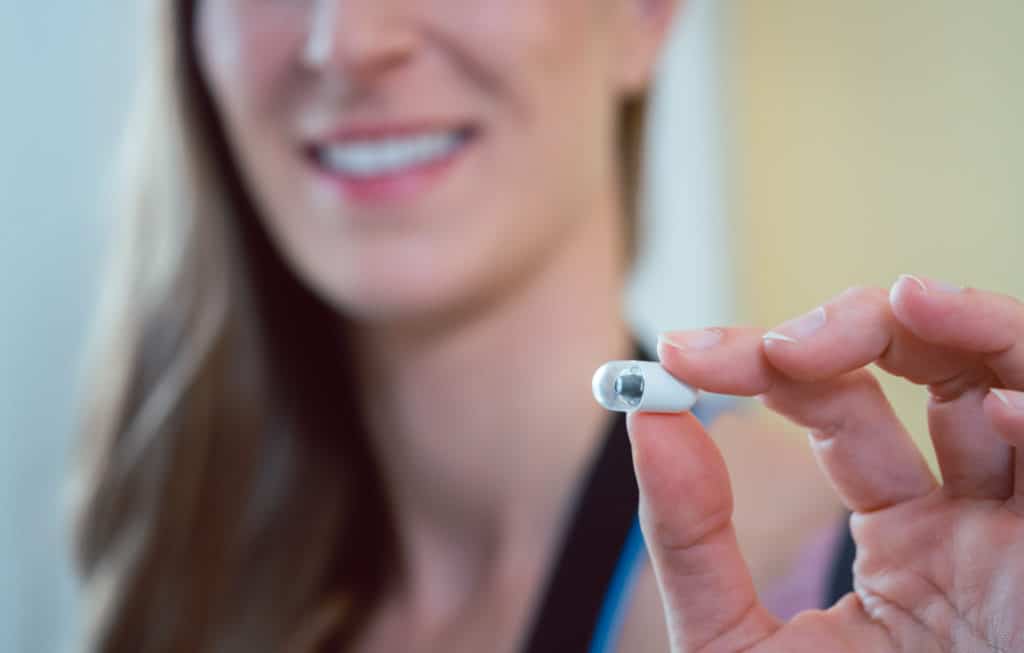The NaviCam Stomach System is a small device, comparable to a common medicinal capsule, developed by Ankon Technologies in Wuhan, China. The NaviCam Stomach System can film the stomach from the inside. The “video pill” contains a tiny camera and an image transmission system.
How the Video Pill Works
The functioning of the NaviCam Stomach System is simple and effective. The video pill is ingested with a glass of water. The pill travels through the esophagus, stomach, and duodenum, transmitting high-resolution images in real-time. During this journey, the integrated camera captures detailed images of the internal walls of the esophagus, stomach, and duodenum, which are then transmitted to an external device. This innovation allows doctors to examine the patient’s digestive system without the need to insert a tube through the mouth, as is done in traditional gastroscopies.
Advantages of the NaviCam Stomach System
The advantages of this new technology are numerous:
- Reduced Discomfort for the Patient: Unlike traditional gastroscopy, which can be invasive, the video pill is much easier to ingest and causes no pain.
- Non-Invasive Procedure: No sedation or invasive instruments are required, thus reducing the risks associated with the procedure.
- Reduced Recovery Time: Patients can resume their normal activities immediately after ingesting the pill, without any need for a recovery period.
- Accessibility: This technology could make gastroscopies more accessible to a larger number of patients, especially those who might refuse traditional gastroscopy due to discomfort.
Testing at the Gemelli Polyclinic
The testing of the NaviCam Stomach System at the Gemelli Polyclinic in Rome represents an important step towards the widespread adoption of this technology. Gemelli is one of the most prestigious hospitals in Italy, and the choice to test the video pill in this facility underscores the importance and potential of this innovation.
During the trials, the video pill demonstrated high diagnostic accuracy, comparable to that of traditional gastroscopies. Patients who participated in the trials reported a positive experience, highlighting the comfort and ease of use of the pill.
Conclusions
The NaviCam Stomach System represents a significant breakthrough in the field of gastrointestinal diagnosis. Its ability to provide detailed images without the need for invasive procedures could significantly improve the patient experience and increase accessibility to early diagnosis of gastrointestinal diseases. With further studies and the growing adoption of this technology, the video pill could become the standard for gastroscopies in the near future.
